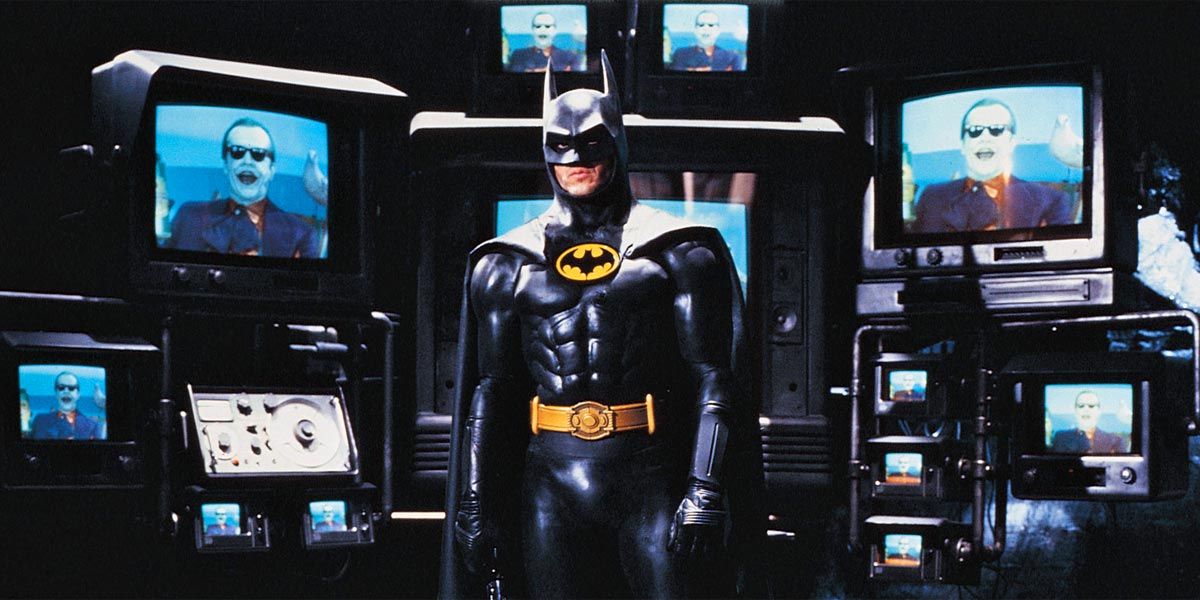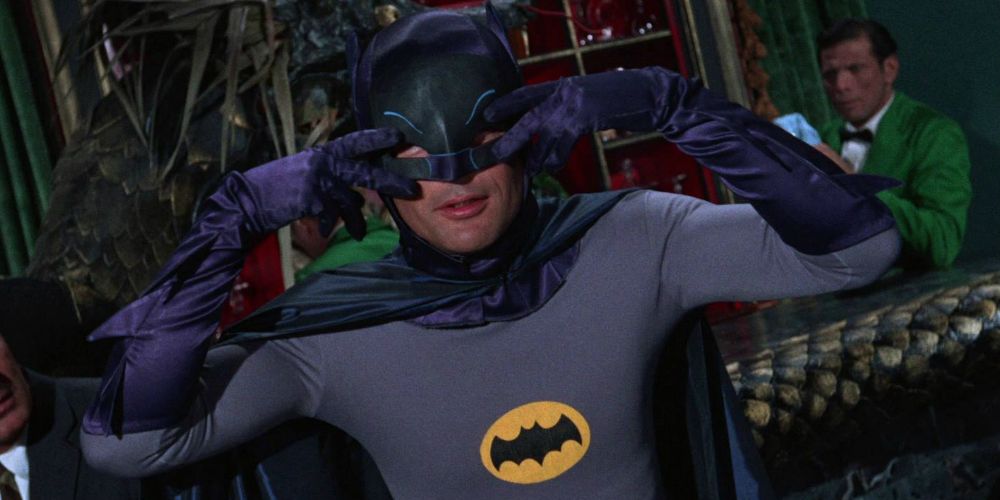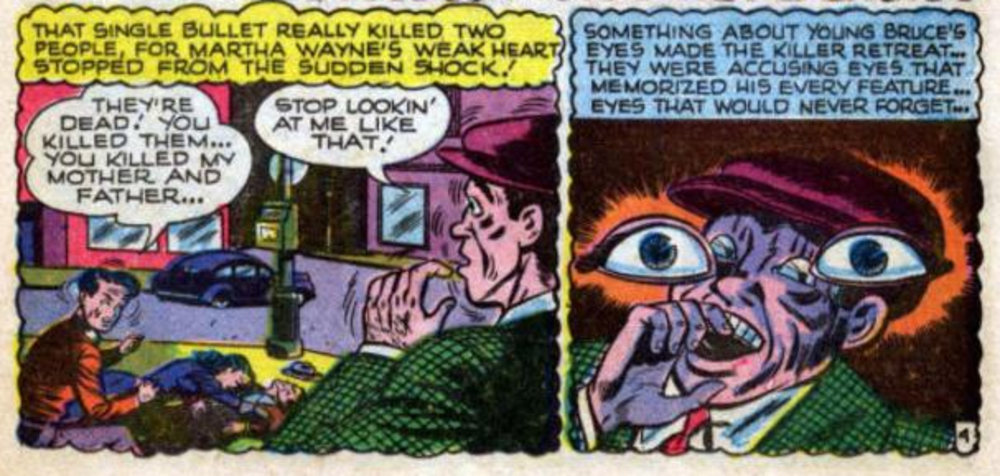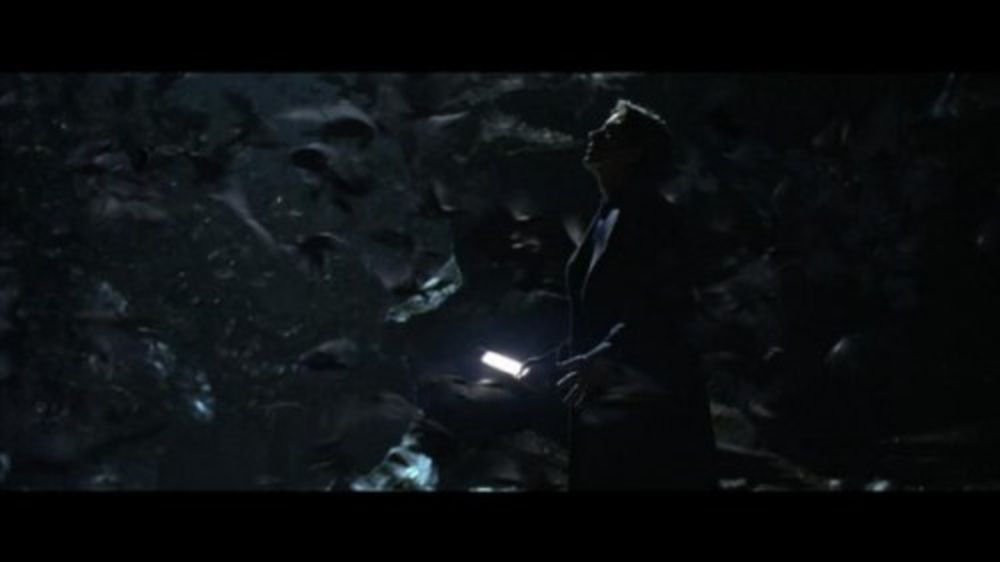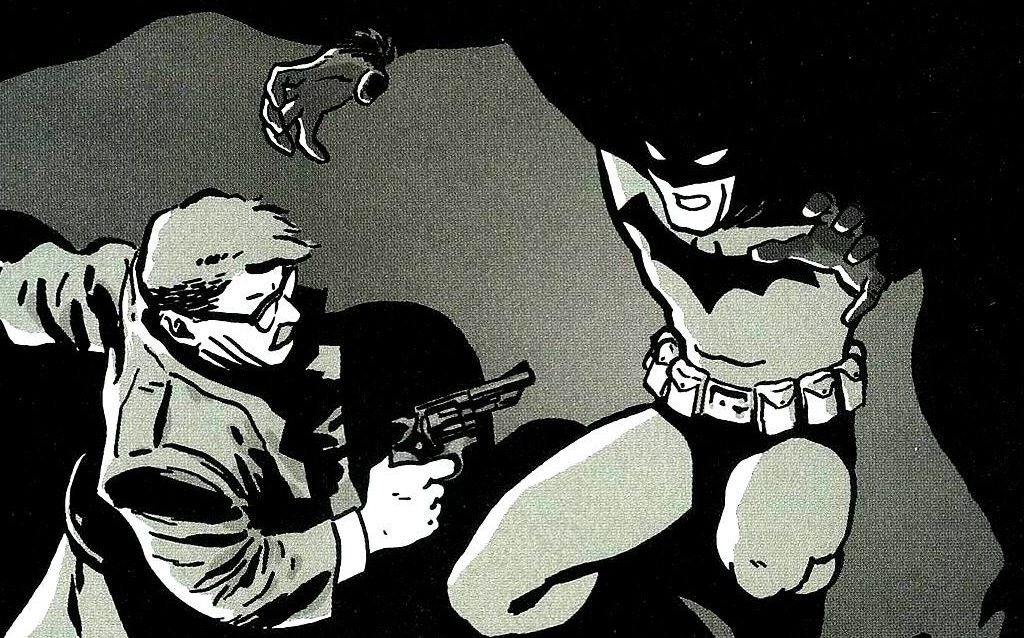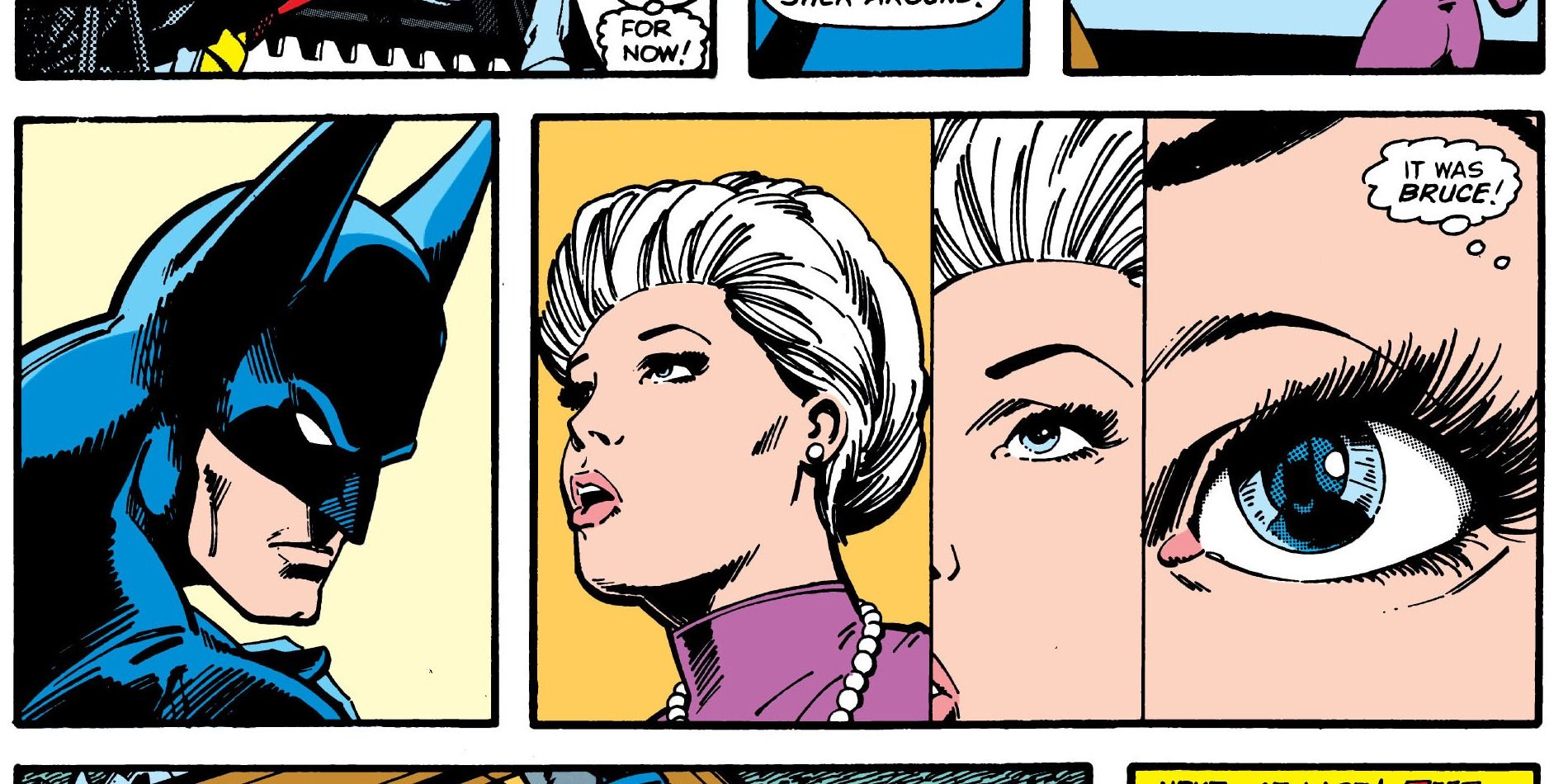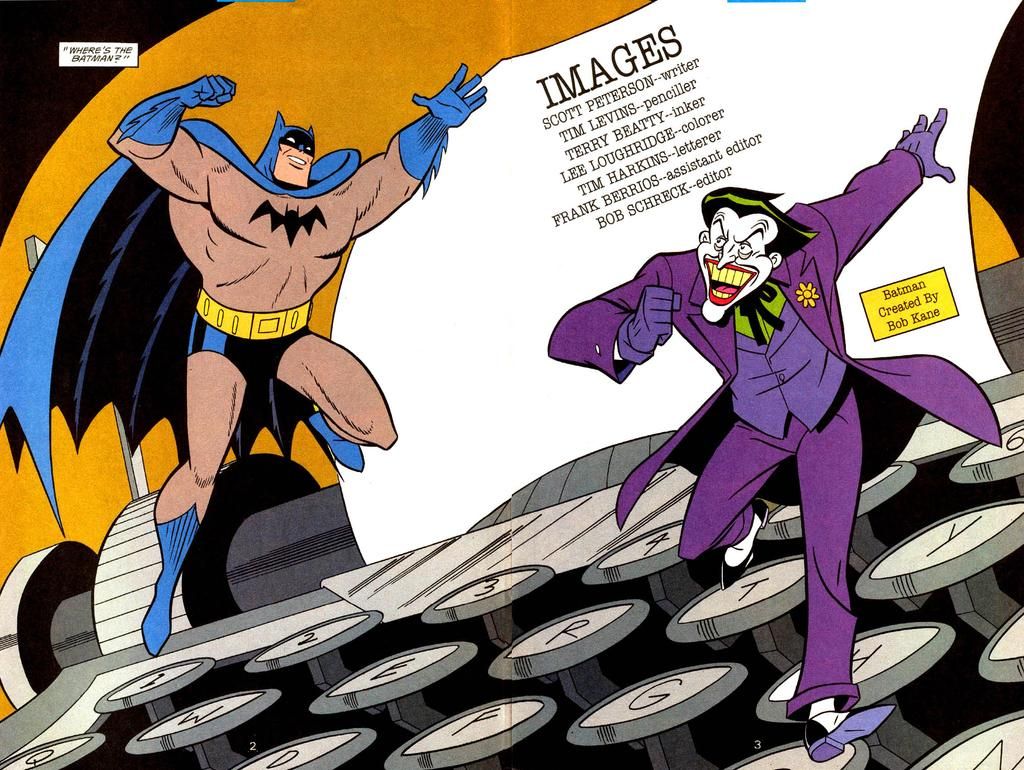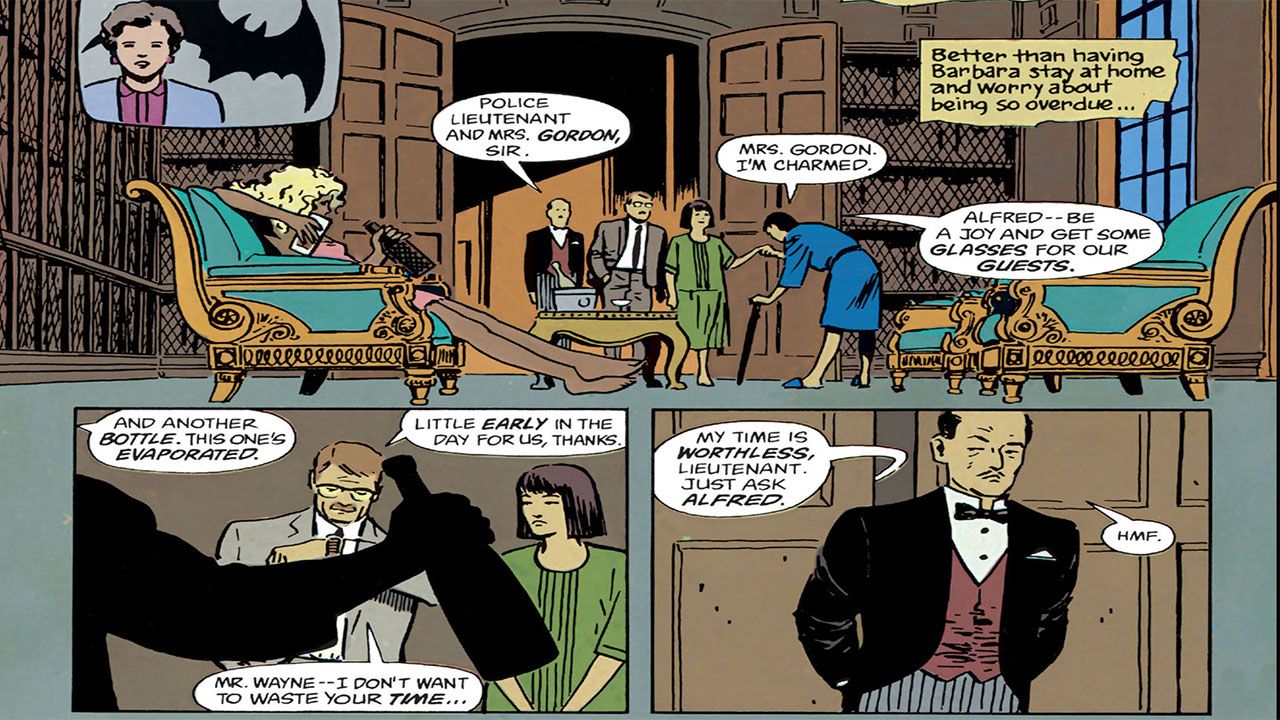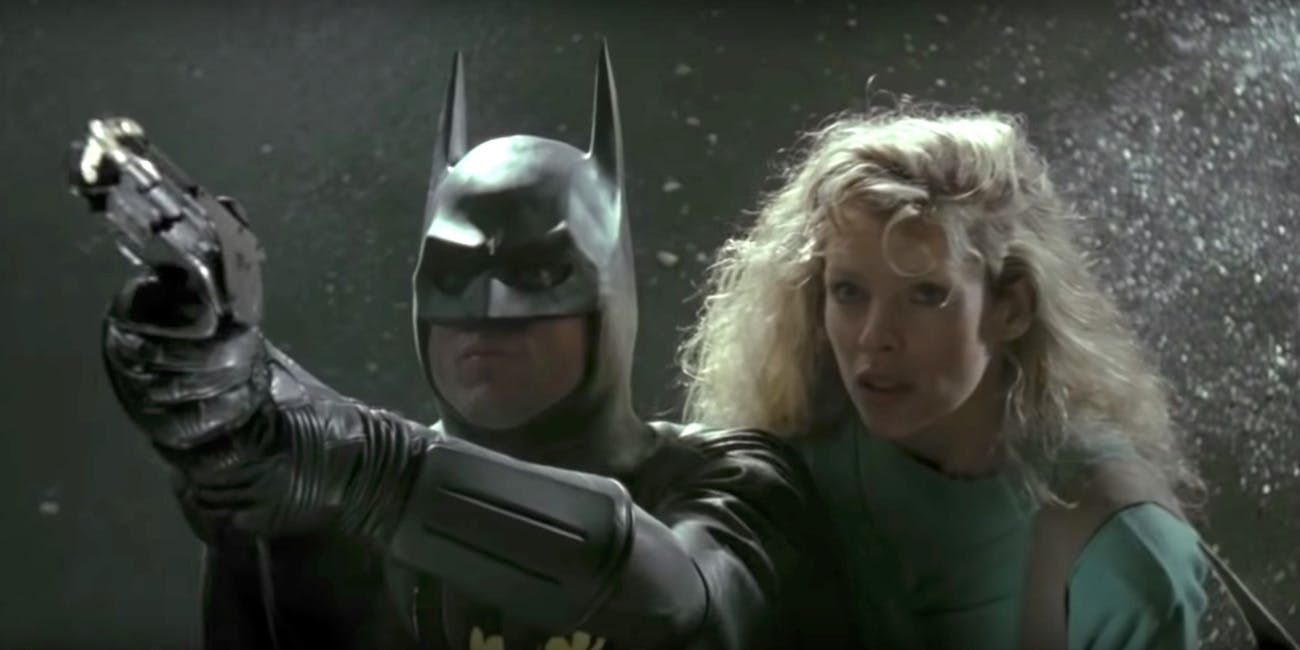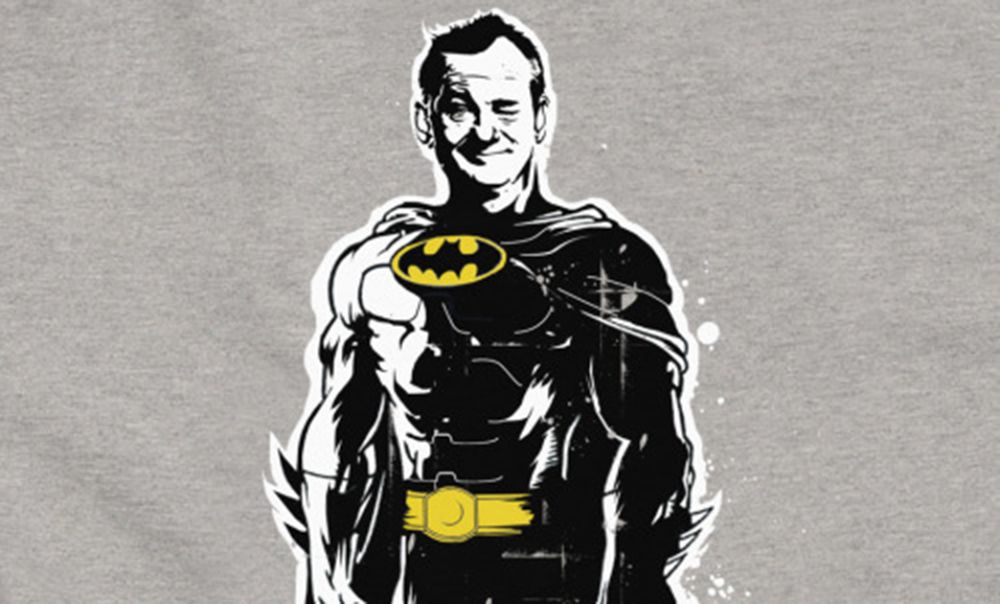Welcome to the fourth installment of Page One Rewrite, where I examine comics-to-screen adaptations that just couldn’t make it. This week, we're going back to 1983, and the earliest script that would eventually become the 1989 blockbuster Batman film.
Producers Jon Peters and Peter Guber toyed with a Batman film for years, initially inspired by the success of 1978's Superman. Hiring Tom Mankiewicz, one of the screenwriters of Superman, for the project made sense. (Mankiewicz also had a reputation for quality action scripts, thanks to his work on James Bond films such as Diamonds Are Forever and Live and Let Die.) Interestingly, Peters been dismissive of Mankiewicz's script interviews, stating it was too traditional, and too similar to Superman, to work.
Peters has also indicated this would be the script for the proposed Ivan Reitman-directed Batman of the early '80s -- the one that would star Bill Murray as Batman and Eddie Murphy as Robin. As crazy as that sounds today, remember that the average person only associated Batman with the 1966 "Biff! Zowie!" TV show, which remained in syndication at the time.
When promoting the '89 Batman, Peters stated they eventually decided to move away from the "camp" of Mankiewicz's script and take inspiration from Batman's darker comic book roots. (The Eyes on Cinema YouTube channel has archived a rare interview with Peters where he discusses Batman's development throughout the '80s.)
The thing is, Mankiewicz did speak about his vision of Batman in the years before his passing. He indicated he also wanted a more serious take on Batman, not so different from the urban hell of Gotham depicted by Tim Burton's film in 1989. And, hey, it's the Internet age. It's not so hard to search online and find Mankiewicz's original script. As it turns out, Mankiewicz was leaning far more on his James Bond background than anything inspired by the Adam West Batman.
It's not a stretch to assume the masculine swagger of James Bond, and the assortment of hi-tech gadgets, could also be applied to Batman. And after offering up a traditional origin setup of young Bruce Wayne witnessing Joe Chill's murder of his parents (with one odd diversion that has a 10-year-old Bruce inventing honest-to-gosh hologram technology), Mankiewicz goes straight into male fantasy hero territory. We witness an adolescent Bruce Wayne hone his body to perfection, learn numerous languages, build the Wayne fortune with his uncanny stock picking skills, and essentially on a dare, become the world's finest ladies man.
Most of this you have to assume is because he's training to become Batman, right? The death of the Waynes scene even has that bit from the comics where young Bruce's intense eyes cause Joe Chill to run away in terror. Why set all of this up if he isn't on his way to becoming Batman?
Bizarrely, the idea is that Bruce has trained to become the perfect man simply because he wants to make his parents proud. No burning desire to wage war on crime. No traumatic encounter with a bat. The script even establishes the Joker as being active from the time of Bruce's childhood to today -- so he's grown up with this criminal clown terrorizing the city but hasn't considered using his perfect body to bring him down.
What motivates Bruce to become Batman? A reporter (one Bruce sleeps with the day they meet) declares "he's idle and jaded with no ambition left," which irritates Bruce. He speeds off in his sports car, encounters a biker harassing a young couple and their child, and ends up in a brawl with the entire biker gang. He returns home, reflecting on his own family. That ridiculous hologram from the opening reappears, representing a memory of the Waynes -- and also shining a light that reveals a previously undiscovered cavern beneath Wayne Manor.
From there, we have a scene similar to Batman Begins' pivotal moment -- Bruce exploring the future Batcave, swarmed by bats. Then, a montage of a shadowy Batman (with "two pulsating yellow eyes") stopping random crimes around Gotham. This arouses the anger of Commissioner Gordon, who's determined to bring down the new vigilante.
Mankiewicz isn't that interested in disrupting the classic status quo, however. So after a dramatic confrontation that has Gordon staring down Batman with a gun, the two join forces to reclaim Gotham from the Joker and an escalating crime wave.
Mankiewicz's take on Batman is a little unclear. We see him as a silent figure of horror for Gotham's criminals (similar to how he's later introduced in Burton's film), yet he also appears on television to reassure the public. He even receives the key to the city from the mayor. It's as if he's trying to reconcile all of the assorted portrayals of Batman in the comic, even if this makes little sense in the context of this specific story.
The actual plot doesn't truly kick in until around halfway through the script. We discover Rupert Thorne, the city councilman Bruce's father was running against literally over twenty years ago, is still in office. He's secretly in cahoots with the Joker, who arranged for Joe Chill to kill the Waynes all those years ago.
Thorne's intern, Silver St. Cloud, is introduced as Bruce's love interest, around this time. And, just like in Steve Englehart's original stories in the comic, she's able to discern his secret identity after encountering Batman.
Joker launches a novel attack on Batman -- declaring he'll kill an innocent civilian each time Batman appears in public. This successfully forces Bruce to retire the cowl (and to smash up his crime lab in frustration and yell at Alfred -- the classic "lowest point for the hero" you'll see in most screenplays.) The devious Joker isn't content, however, hiring his own imposter Batman to appear in public.
The imposter Batman happens to appear at a charity circus performance, and can you guess who's performing that night? The Flying Graysons, featuring a teenage Dick Grayson. (Eddie Murphy was in his very early 20s at this point, so casting him as a teen Robin wouldn't have been a stretch.) During the chaos, Dick's parents fall to their deaths. Dick becomes Bruce's ward, declaring he'll have his revenge...on Batman.
(By the way, introducing Robin so late, literally eighty percent into the script, is a strange choice. If we're going with Bruce only deciding to become Batman as an adult, why not place the incident with the Graysons towards the beginning and swap out the scene with the bikers terrorizing the family?)
The climax of the film has Batman coming out of retirement to save Silver from the Joker, who's kidnapped her on the advice of Rupert Thorne. (Oh, yeah. Dick Grayson's hatred of Batman is resolved when he discovers the Batcave, overhears Bruce's conversation with Alfred, and joins him during the final battle with the Joker. No Robin costume, though.) The finale is set at a museum exhibit celebrating the American author. It features "huge, outsized version(s) of everyday items...tools of a writer's trade: enormous pencils, erasers, quill pens, etc." Also, a gigantic typewriter.
Now, clearly, we're in a for a tribute to the classic Dick Sprang Batman comics, right? A lighthearted romp, a nod to the Silver Age comics Mankiewicz likely enjoyed as a young man. Except, when Rupert Thorne takes aim at Batman during the fight, he accidentally shoots Silver St. Cloud instead. Silver dies, revealing to Batman she knows his secret. Enraged, Batman kills Thorne with a "viciously sharp thumbtack," placed inside "a giant rubber band pulled taut" that spears Thorne in the chest. Just to rub it in, Thorne then falls into a giant pencil sharpener, which grinds him up good.
Joker, meanwhile, is merely apprehended by the police. Maybe he'll join Robin in the sequel. The final shot has Batman, "a regal black prince," posing dramatically next to Robin (now in costume) on the edge of the tallest building in Gotham.
FAN SERVICE
It's obvious Mankiewicz is drawing heavily on the comics here. One of the "Batman in action" montages even has a reference to Batman confiscating a giant dinosaur, created by the Joker. There's also a role for the Penguin, who appears briefly as a mobster employed by the Joker to kill Batman. Reportedly, producers wanted John Candy for the role.
“UM, ACTUALLY…”
For a script clearly written by someone with a knowledge of Batman lore, it's surprising to see Commissioner Gordon identified as "David Gordon." I get that you couldn't just Google this kind of info in those days, but it's a glaring detail for Mankiewicz to get wrong.
Also amusing to see Mankiewicz establish Alfred as the Wayne family's old retainer, the man who raises Bruce after the death of his parents. It doesn't seem odd today, as that's become accepted lore. However, John Byrne always pokes fun at Frank Miller for establishing this as canon by mistake in Batman: Year One. (Miller assumed Alfred had always been the Wayne family's butler, ignorant of his earliest appearances.) Mankiewicz beat Miller to this by four years.
I LOVE THE '80s
One of the Joker's public stunts includes terrorizing host Jack Barry and invading the set of real-life game show The Joker's Wild.
THAT’S JUST WEIRD
The film the Waynes go to see on that fateful night is established as The Nun's Story, starring Audrey Hepburn. Also, again, kid Bruce Wayne can invent holograms.
PULLED FROM THE SCRAPS
Batman escaping the Joker's hoods in the Batmobile with Bruce Wayne's love interest later appears in the '89 film. Also, having Bruce Wayne encounter a nearly adult Dick Grayson after a charity circus performance goes wrong would later repeat in Batman Forever.
DID WE DODGE A BULLET?
There are real problems with this script -- characters with no real impact on the story keep popping up right up until the final act, the tone seems all over the place, and Bruce Wayne's portrayal is frankly absurd at times. Still, it's more coherent than the '89 Batman, which suffered from a jerky momentum and a villain that constantly upstaged the hero. Also, Silver St. Cloud has far more personality here than Vicki Vale ever exhibited in the '89 film. (Maybe even too much; Silver endlessly quips like she's in an MCU film.)
I'm not sure how the public would react to a movie that tries to sell Batman as the dark figure of the night preying on criminals while also occasionally cracking jokes and appearing in public with politicians, though. Decades later, Grant Morrison would attempt to meld all of these disparate Batman takes into one character, so it's amusing to think of Hollywood trying this decades earlier.
Mankiewicz seemed to believe a public willing to accept increasingly outlandish James Bond films would buy this Batman. And his vision of over-the-top comic book visuals working onscreen turned out to be decades ahead of its time. I can understand why producers didn't want to go so fantastic with the movie, but totally junking the script was a questionable move. With a few tweaks, this could've worked as a worthy Batman film. But buying Bill Murray as this Batman, the flawless specimen of the ultimate male is...well, let's say difficult.
So that’s all for now. Until next time, check out the G. I. Joe novels I wrote for the Kindle Worlds project for free over at Smashwords. And thanks to Pop Chart Lab for that Bill Murray image.

